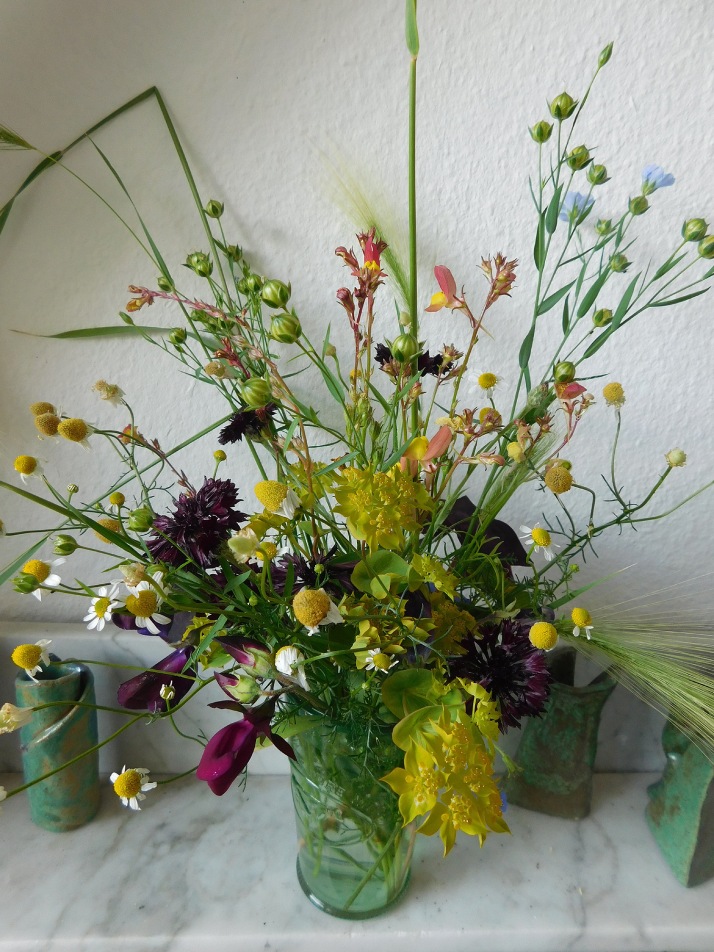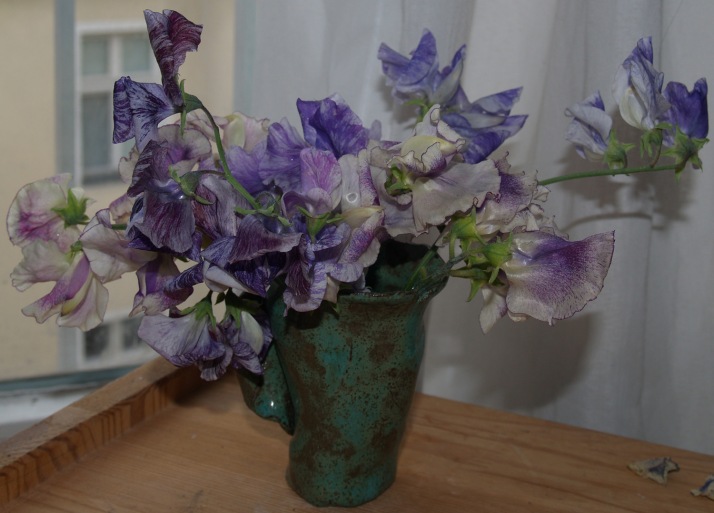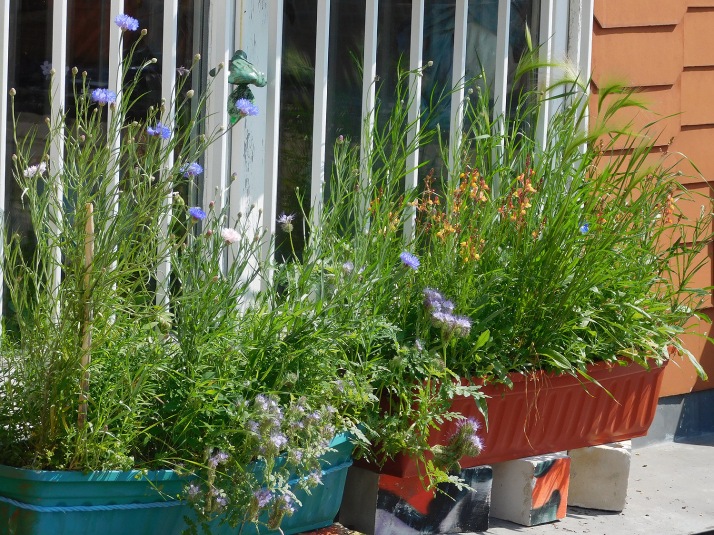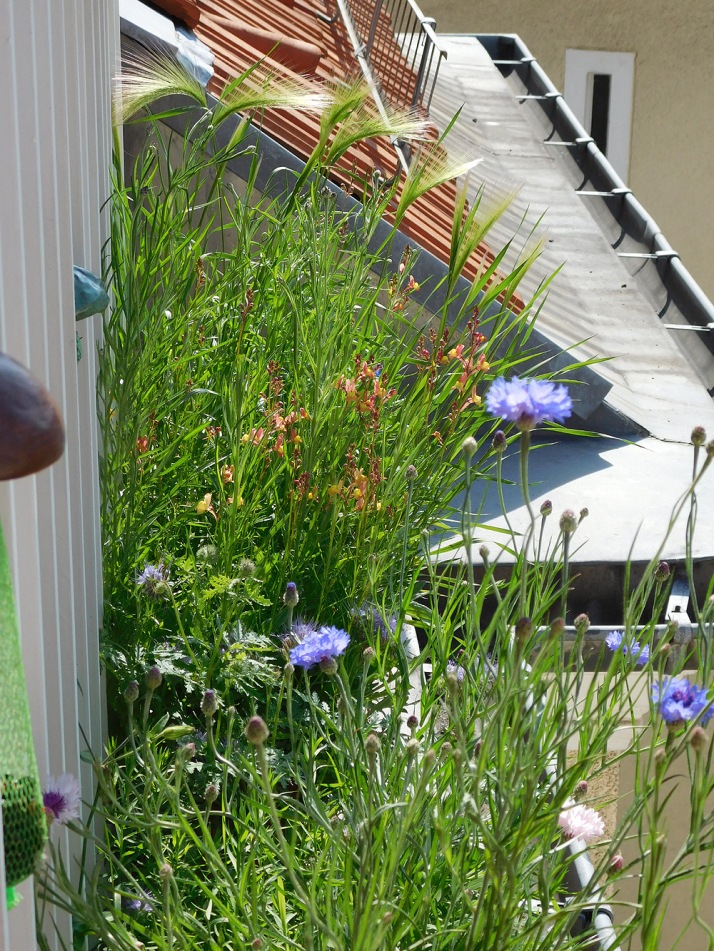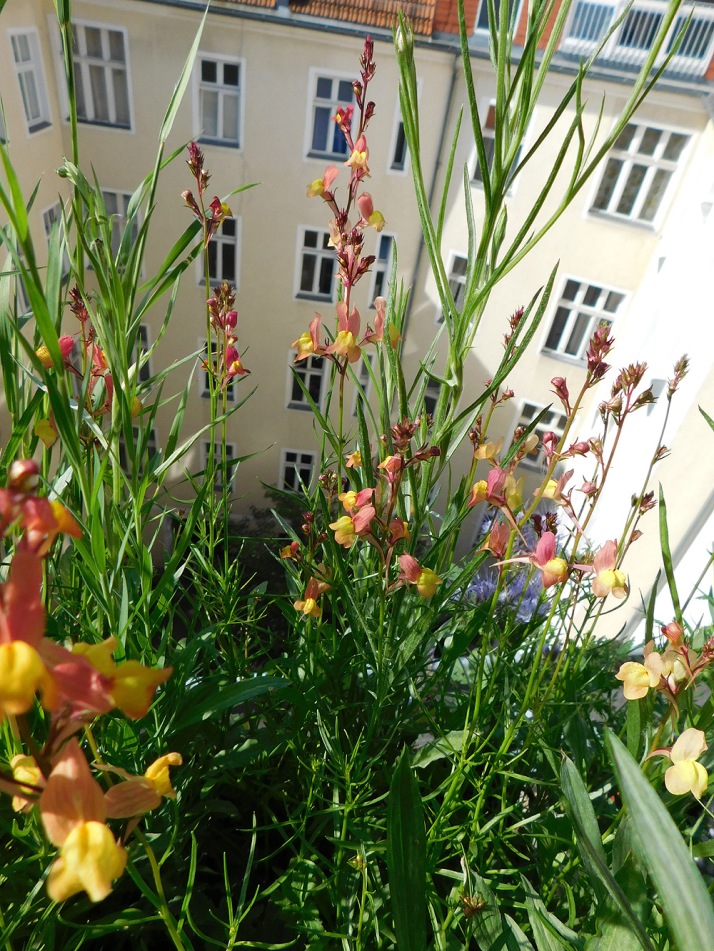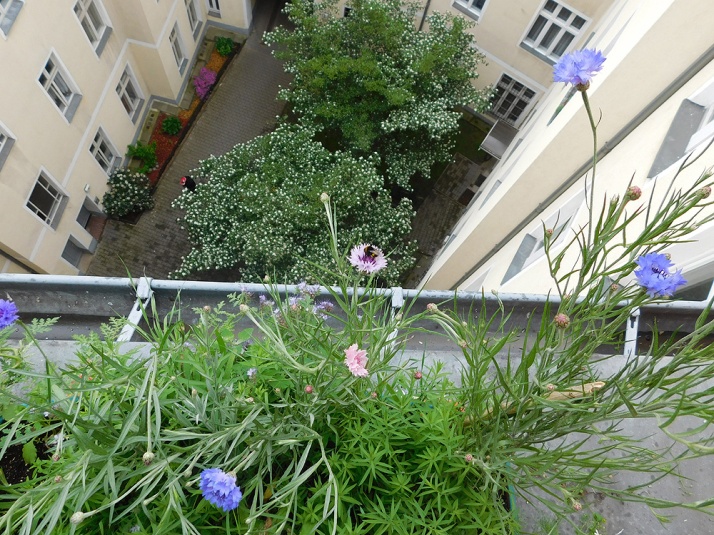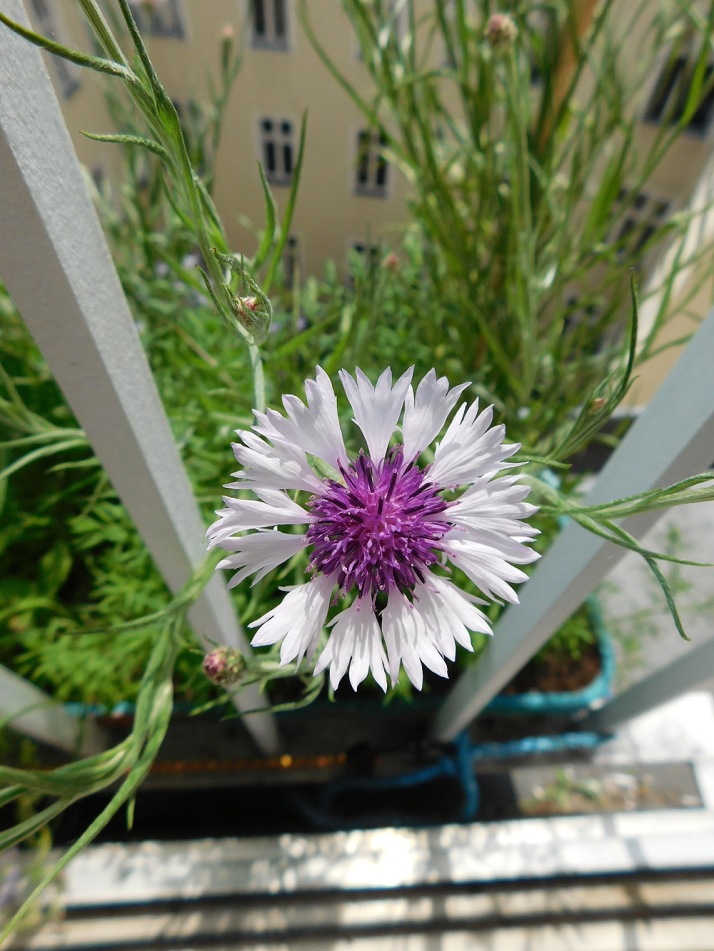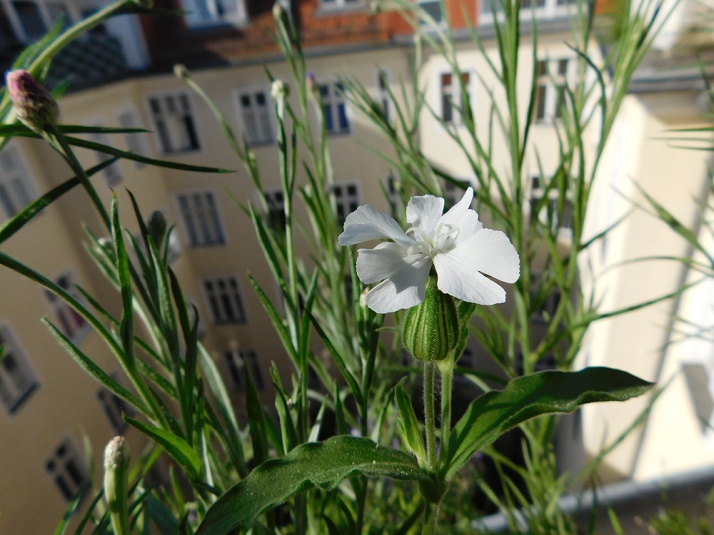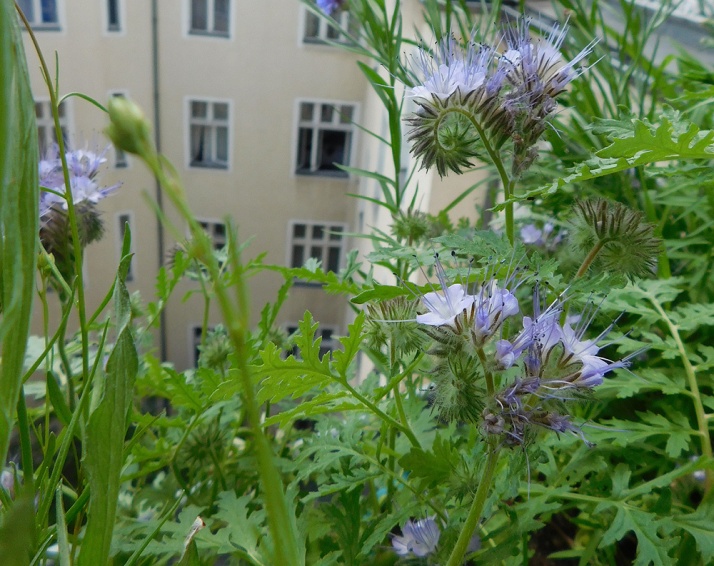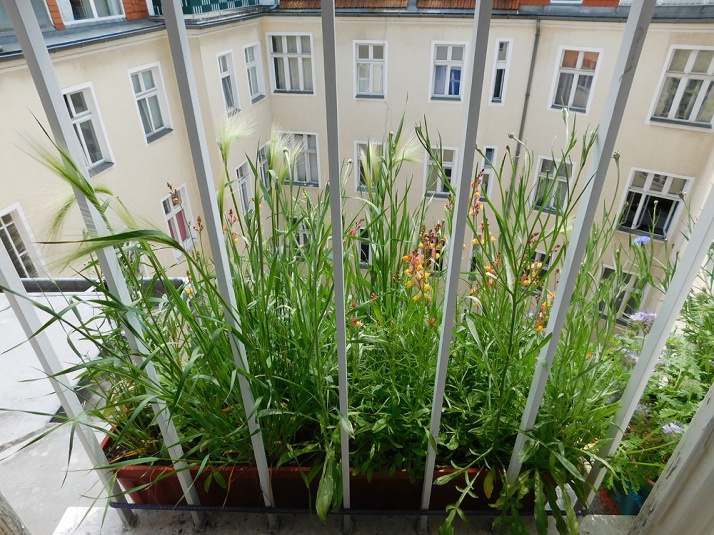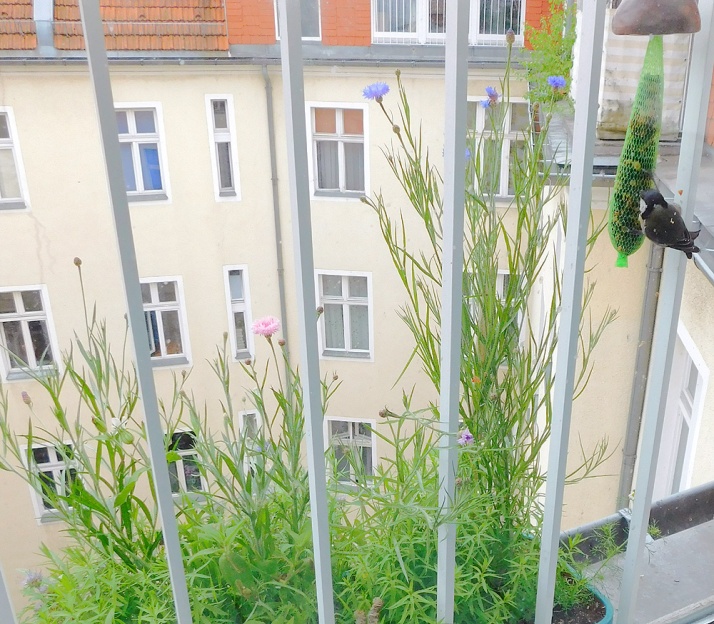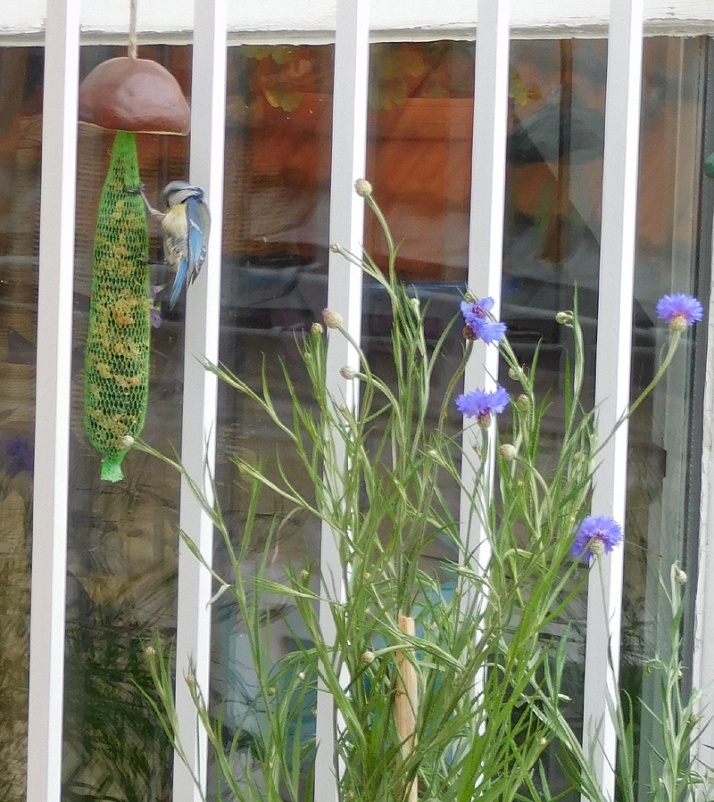This post was inspired by all the glorious and inspiring tweets and blog posts from England, celebrating #britishflowersweek. I love the idea and spirit of that. The commercial cutflower industry which provides cheap shrill blossoms imported from places like Kenya is a vile business and environmentally irressponsible. A BBC crew recently took a closer look at the industry: The World’s Biggest Flower Market review – appallingly eye-opening
Maybe it is because I grew up in a village, but I never understood the motivation behind buying Roses sans fragrance in November, let alone orange Gerberas in January. Too me it seems incredibly tacky. Even in a metropole, there are loads of wildflowers to forage for. And of course, easy cut flowers to grow on your balcony!
The annual Hare’s ear, Bupleurum rotundifolium “Griffithii” is very popular with florists, due to its bright chartreuse umbels on sturdy stems plus attractive, grey-green oval leaves. It can easily be grown from seed (though germination takes some time).
I love it as a contrast to burgundy and purple blossoms, like Sweet Peas or Cornflowers. Other interesting fillers are Chamomile and the seeds of Flax, Linum usitatissimum. In this bouquet above and below their echoing round shapes provide a repeating rhythm and add a bit of dynamic.
Annual Hordeum jubatum – a kind of Barley – adds height and a bit of country flair. Once established, it self-seeds, even in containers.
Phacelia viscida, an annual wildflower from California, is the best choice for a clear blue. I would not grow it in the garden though, because it self-seeds a little bit too enthusiastically. I noticed that bees and bumblebees are not particularly interested in them – unusual for a Phacelia.
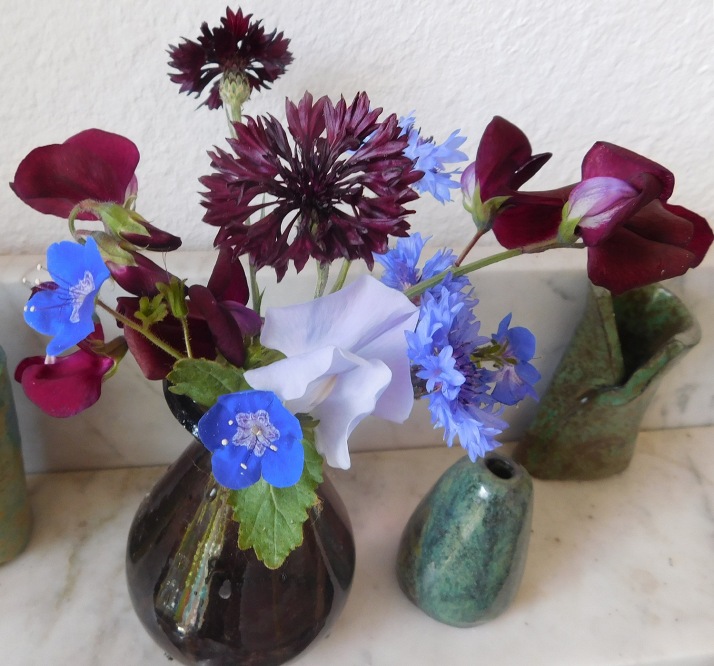
Phacelia viscida with Cornflowers and Sweet Peas (Black Prince and Solstice Light Blue) in a bouquet
Sweet Peas are fantastic cut flowers, although they do not last too long in vases. I like to combine them just amongst themselves, to showcase certain aspects, or use them as fragrant fillers.
There are loads more easy cut flower options which can be grown with little effort in small containers. I will try to regularly take part in Cathy’s “In a vase on Monday” to show some.

